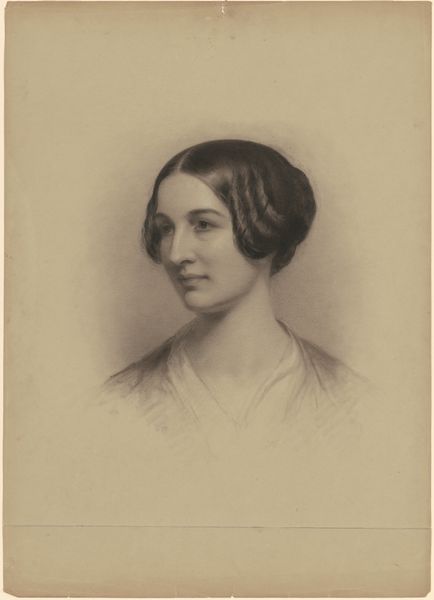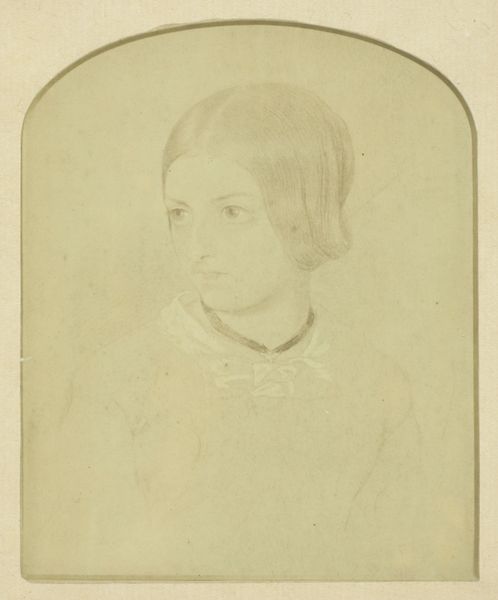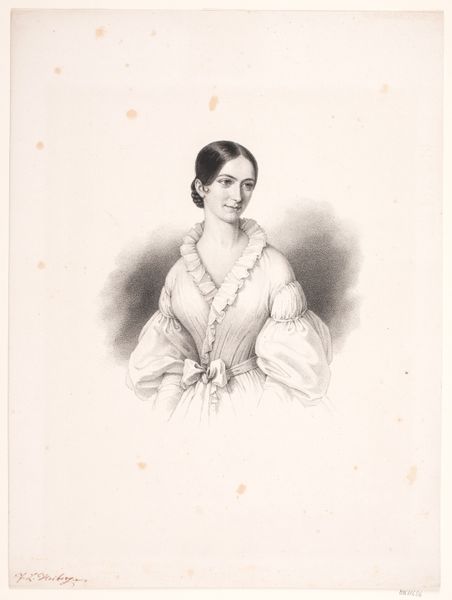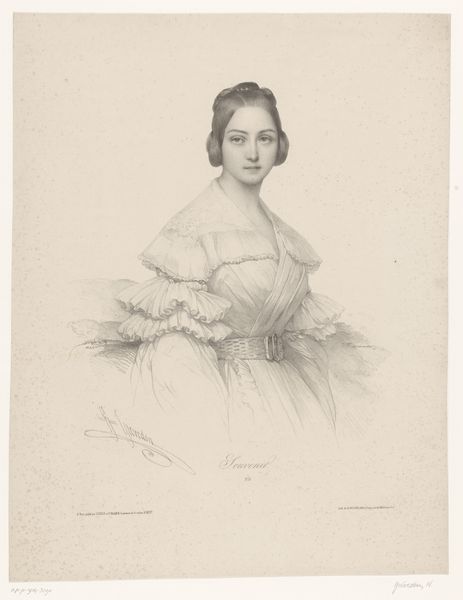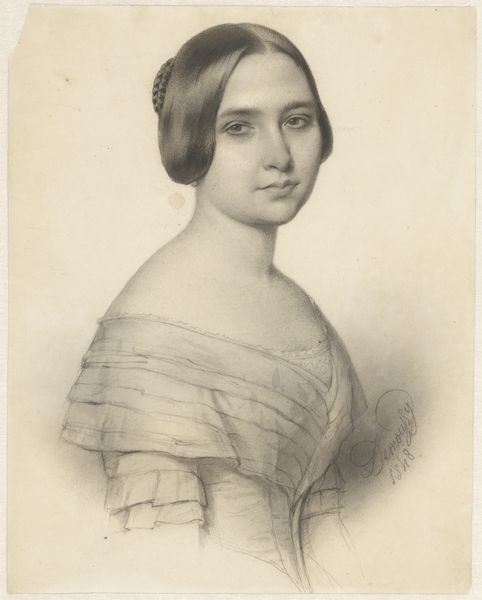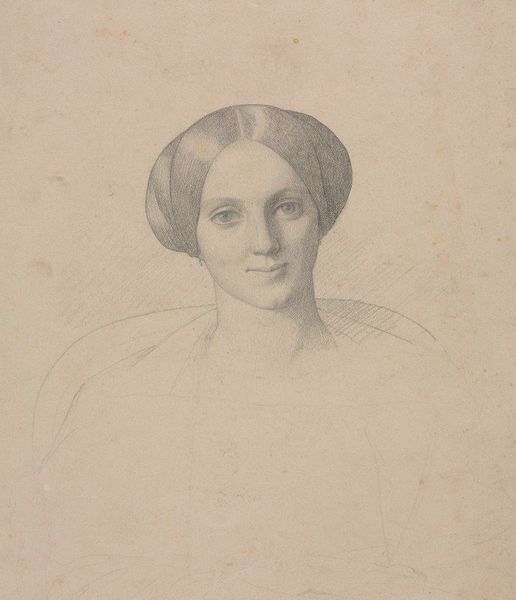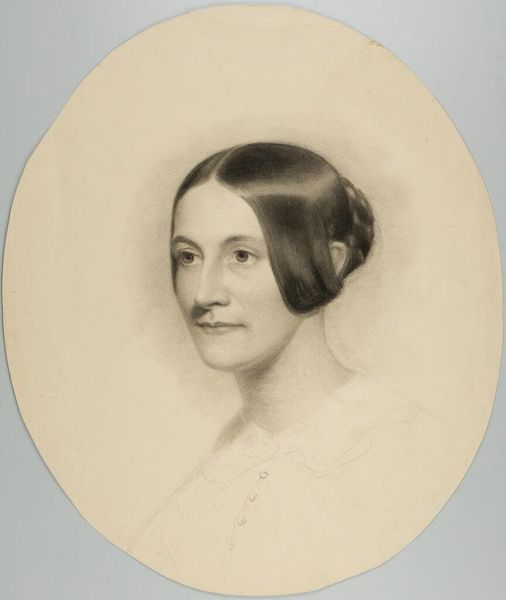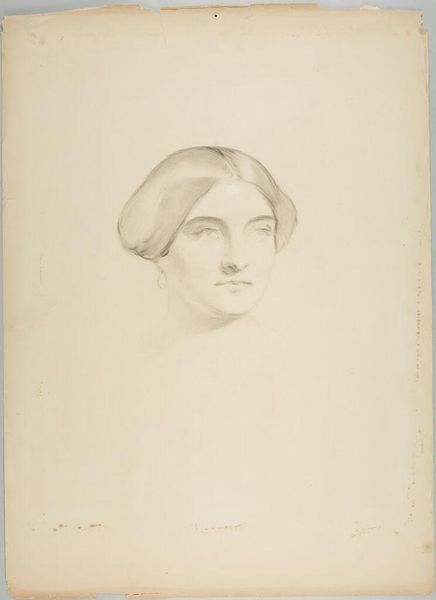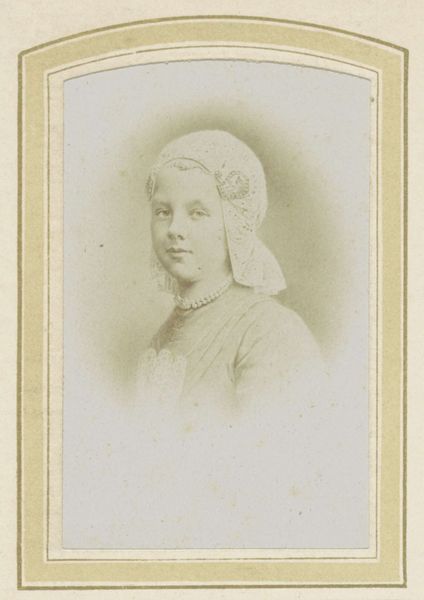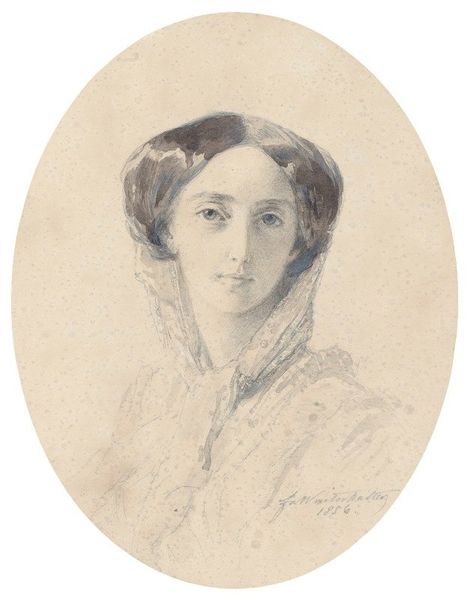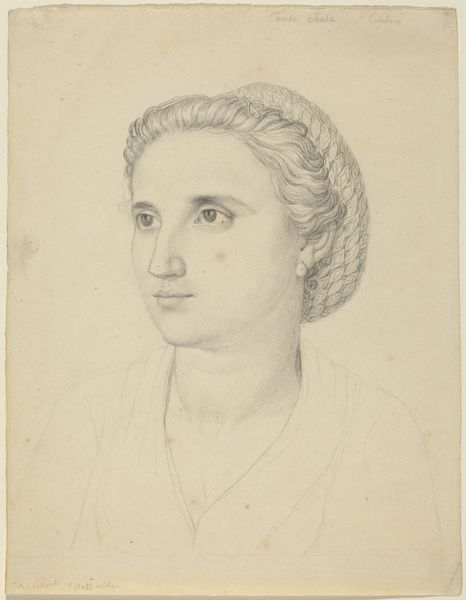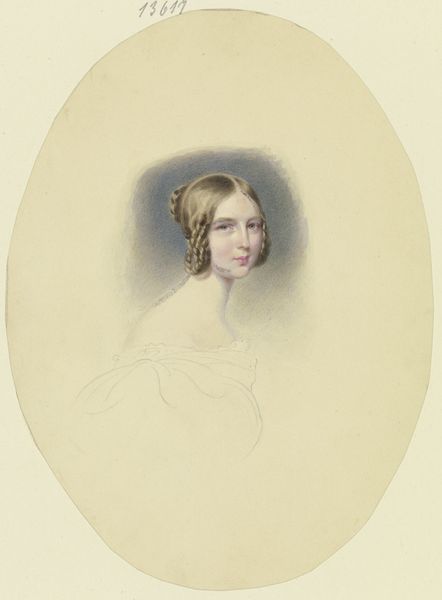
drawing, pencil
#
portrait
#
drawing
#
pencil drawing
#
pencil
#
portrait drawing
#
academic-art
#
portrait art
#
realism
Dimensions: sheet: 73.66 × 54.93 cm (29 × 21 5/8 in.)
Copyright: National Gallery of Art: CC0 1.0
Curator: This drawing, "Head of a Young Woman," by Seth Wells Cheney, likely created sometime between 1840 and 1854, offers a delicate study in pencil. Editor: There's a serene, almost melancholy quality to this portrait. The soft lines create a sense of vulnerability. I immediately think about the societal pressures placed on women of this era to appear demure and modest, especially in their portraits. Curator: Indeed. It embodies the restrained aesthetic common in Academic art of that time, aspiring to ideals of beauty found in classical forms. Consider, for example, the subject’s simple hairstyle – it evokes an almost Grecian sensibility. Cheney masterfully uses pencil to build layers of tone, carefully modeling the face with light and shadow to create form and the illusion of three-dimensionality. The lack of embellishment keeps our focus directly on her features, asking us to engage with her character directly. Editor: I’m drawn to the fact that she lacks elaborate adornment. It makes me wonder if this was intentional, a deliberate effort to humanize her outside of societal constraints related to feminine ideals or class status, or to comment on some level, regarding what was perceived as beautiful versus “good” women? Curator: The symbols certainly carry through. Pencil, as a medium, also imparts a certain intimacy. Unlike the formal oil portrait, a pencil sketch suggests a more immediate and personal connection between artist and subject. A fleeting, if not informal record. Editor: True. And the unfinished quality around the shoulders and dress creates an impression that she is more of a presence, a psychological subject of inner states versus the embodiment of feminine charms for a patriarchal culture, like a Venus on display. Perhaps the unfinished lines indicate that female identity is always in formation. Curator: That's a thoughtful reading. What interests me further is how it continues a longer tradition, stretching back centuries, of representing ideals of feminine beauty—though now filtered through the lens of burgeoning American artistic sensibilities. Editor: Precisely. In today's world, viewing such imagery challenges us to unpack the complexities embedded within those ideals and the roles women were forced to assume—both then and in how they echo into the present. Curator: It's a potent reminder that what we consider beautiful is rarely neutral. Editor: Yes, and the power dynamics subtly embedded within those aesthetic preferences still resonate profoundly.
Comments
No comments
Be the first to comment and join the conversation on the ultimate creative platform.
